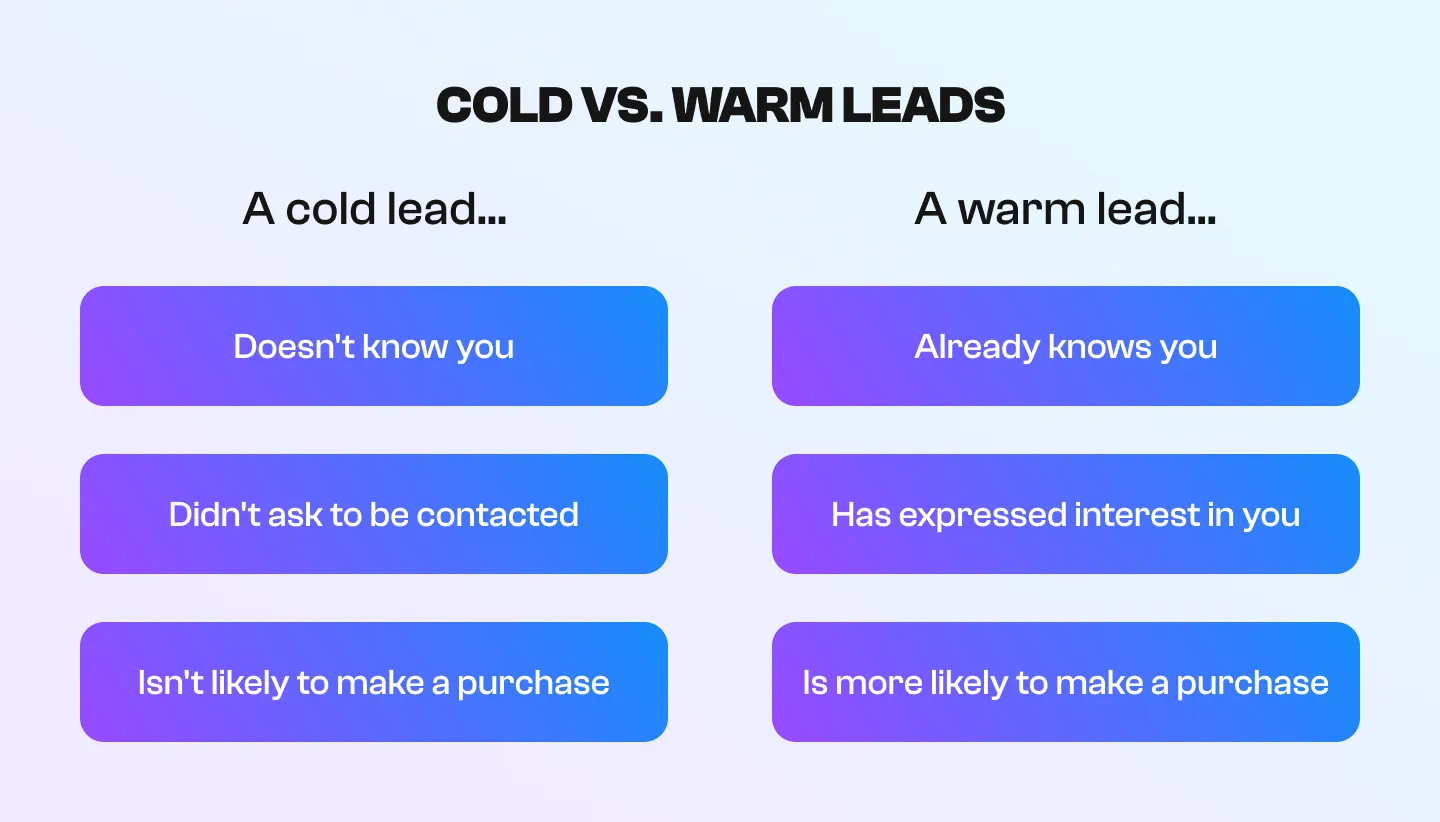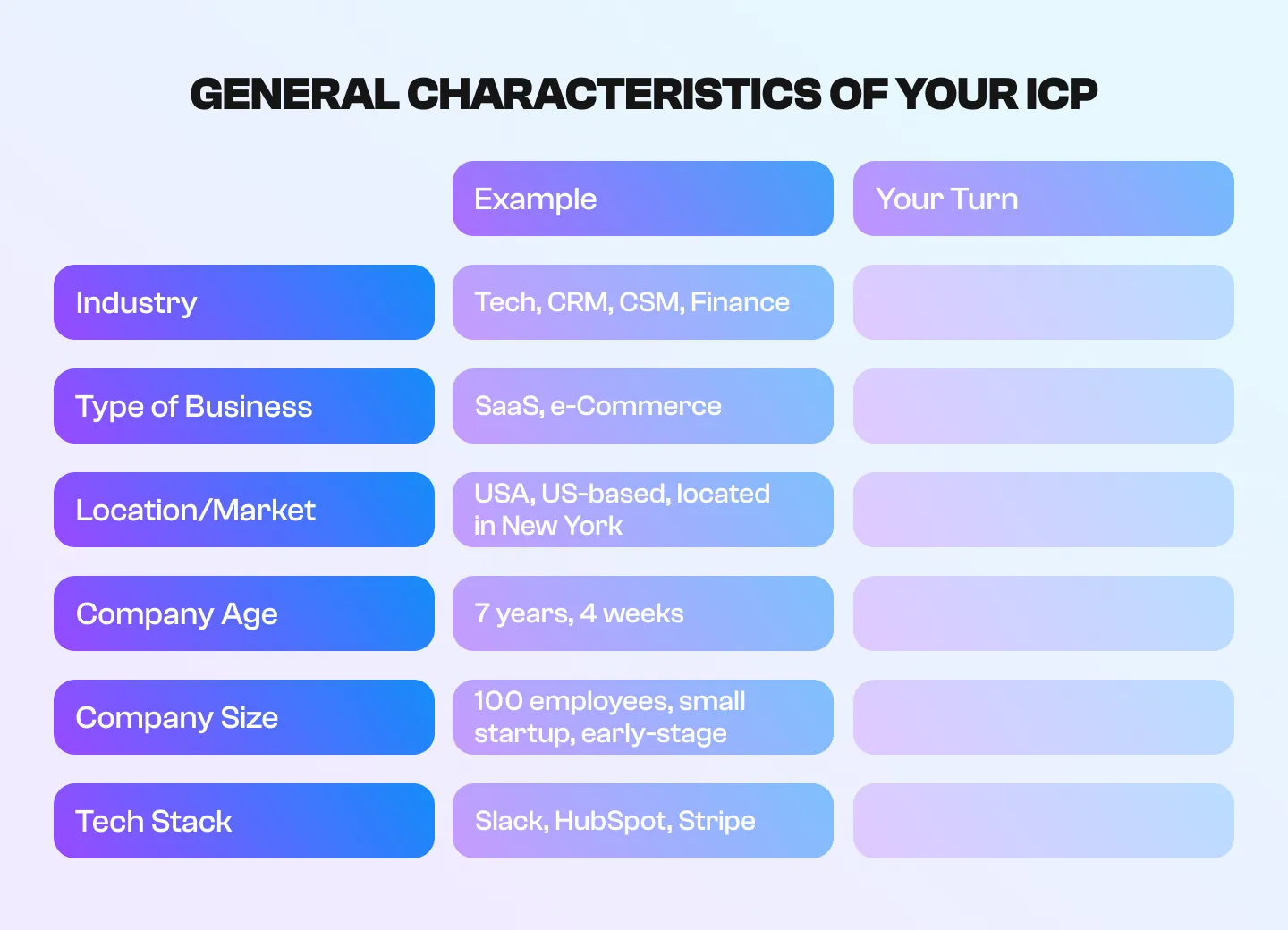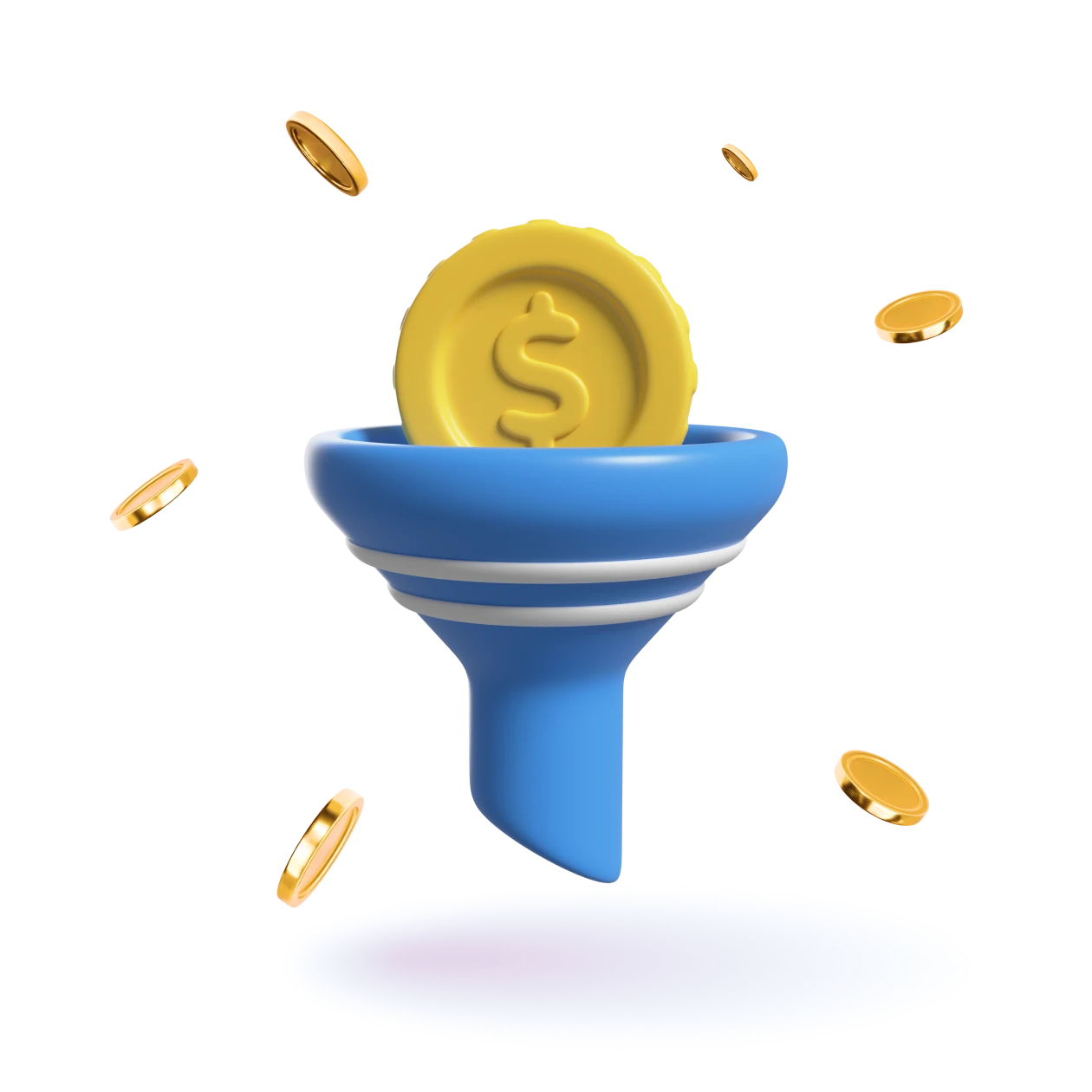Every business needs leads, but not all leads are created equal. Some convert into loyal customers, while others drain your marketing budget. The challenge isn’t just generating leads—finding the right ones at the right cost.
Lead generation expenses vary widely depending on your industry, target audience, and marketing strategy. A company spending thousands on PPC or SEO might generate many leads but struggle with conversions. On the other hand, a more targeted outbound approach could result in fewer leads but higher-quality prospects who are ready to buy.
Real-World Example: Cost of Lead Generation
A fast-growing SaaS startup once invested over $50,000 in inbound marketing—SEO, blog content, and PPC ads. The results initially looked promising: website traffic surged, lead forms filled up, and the sales pipeline seemed packed. But after months of follow-ups and demos, the team faced a frustrating reality—most of those leads weren’t converting. They attracted interest but not decision-makers.
Realizing their approach wasn’t delivering the right prospects, they pivoted to outbound strategies. Cold email campaigns and targeted LinkedIn outreach connected them directly with high-intent buyers. Their B2B cost per lead (CPL) increased, but something more important happened: their customer lifetime value (LTV) tripled.
So, are you truly optimizing your cost per lead or just chasing the lowest number possible? Let’s break down B2B lead generation costs and what you should pay for.
Let’s break down the factors that impact costs and how to maximize your return on investment.
Factors Influencing Lead Generation Costs
B2B Lead generation costs aren’t fixed—they vary based on multiple factors, from your target audience to the tools and strategies you use. Understanding these factors helps businesses allocate budgets effectively and optimize their CPL for better ROI.
Industry & Target Audience
Not all industries have the exact cost per lead. Costs fluctuate based on B2B vs. B2C models, niche vs. broad audiences, and market competition.
- B2B Leads – Generally more expensive due to longer sales cycles and complex decision-making. For example, cybersecurity and SaaS companies often see CPLs of $400–$1,200 per lead due to high competition.
- B2C Leads – Typically lower CPLs, as purchase decisions are made faster. However, mass-market campaigns can lead to lower conversion rates.
- Niche Markets vs. Broad Audiences – Highly specialized industries (e.g., healthcare tech) tend to have higher CPLs due to limited target audiences, while broad markets (e.g., e-commerce) benefit from lower costs but higher competition.
Lead Quality: Cold vs. Warm Leads
The level of intent in your leads plays a significant role in cost and conversion rates.
- Cold Leads: Sourced from outbound prospecting, these leads require nurturing, have a higher cost per lead, and often result in more targeted sales conversations.
- Warm Leads: Generated through inbound efforts like content marketing or referrals, warm leads generally cost less but require nurturing time before they convert.
- High-Intent Leads: Prospects actively looking for a solution have the highest CPL and the best conversion rates, making them worthwhile investments.

The balance between lead quantity and quality impacts your overall marketing budget. Focusing on high-intent leads may cost more upfront but improves long-term ROI.
Technology & Tools
The software and automation tools used in B2B lead generation add to costs and improve efficiency.
- CRM Systems – Tools like Salesforce or HubSpot ($1,200–$3,000 per year) help manage leads and streamline outreach.
- AI-Driven Lead Scoring – Platforms prioritizing high-value prospects reduce time wasted on low-quality leads, improving cost-per-lead efficiency.
- Cold Outreach & Email Automation – Tools like Reply.io, Instantly.ai, and Lemlist ($100–$500 per month per user) help scale outbound efforts.
Investing in the right tech stack can reduce CPL over time by improving conversion rates and minimizing wasted outreach.
Sales Cycle Length
The longer the sales cycle, the more expensive lead generation becomes.
- Short Sales Cycles – Products with fast decision-making (e.g., SaaS under $1,000/month) have lower CPLs and require fewer touchpoints.
- Long Sales Cycles – Enterprise-level deals (e.g., cybersecurity and healthcare tech) require multiple touchpoints, nurturing campaigns, and follow-ups, which increase the B2B cost per lead.
Companies with long sales cycles must optimize nurturing strategies to maximize ROI while maintaining sustainable CPL levels.
Cost Per Lead in Outbound Marketing
CPL = Total Lead Generation Spend ÷ Number of Leads Acquired
But while the formula is simple, what goes into that cost depends on your strategy.
Inbound marketing costs per lead include content creation, SEO, paid ads, and marketing automation tools. These efforts attract leads over time, but not all are high-intent buyers. Many are early-stage researchers or casual browsers who may never convert.
Outbound marketing operates differently. Instead of waiting for prospects to come to you, it actively engages decision-makers through personalized outreach. This approach comes with its cost structure, including:
- SDR efforts – Hiring, salaries, commissions, and ongoing training. SDRs are the backbone of outbound lead generation, spending hours researching prospects, crafting messages, and following up.
- Cold outreach tools – Email automation platforms, LinkedIn Sales Navigator, CRM software, and calling tools. These help SDRs scale their efforts and manage conversations efficiently.
- Data acquisition – High-quality prospect lists, lead enrichment services, and verification tools to ensure targeted and effective outreach.
Because outbound marketing is highly targeted, the CPL is often higher than inbound. However, the trade-off is quality—outbound leads tend to be further along in the buying process, making them more likely to convert into paying customers. Instead of chasing volume, outbound prioritizes engagement with the right people, resulting in a more predictable pipeline and more substantial ROI.
Breaking Down Outbound CPL Components
1. SDR Salaries & Commissions
Your SDR team is one of the most significant outbound B2B lead generation costs. These people are responsible for prospecting, cold outreach, and booking meetings with qualified leads. And quality SDRs don’t come cheap.
In the U.S. market, hiring and training an SDR costs between $50,000 and $80,000 per year per rep, including base salary, commissions, and benefits. The actual cost varies based on experience, location, and performance-based incentives.
At SalesAR, our data shows that an SDR typically generates 30–50 monthly leads. This means a significant portion of the outbound B2B cost per lead comes directly from labor costs. The more experienced and efficient your SDRs are, the better your cost per lead will be, because productivity directly impacts your ROI.
For companies considering outbound, the key question is: Are you investing in skilled SDRs who can bring in high-quality leads, or are you trying to cut costs at the expense of results?
2. Data Acquisition & Prospect List Building
A well-targeted prospect list is the foundation of any successful outbound campaign. But building that list isn’t free.
Many companies rely on B2B databases like ZoomInfo, Apollo, or LinkedIn Sales Navigator, which can cost between $3,000 and $12,000 per year, depending on the level of access and the number of users. These tools provide extensive company and contact data but aren’t always perfect. Outdated or inaccurate information can lead to wasted outreach efforts.
For higher accuracy, some businesses invest in manual research, hiring SDRs or data specialists to verify and enrich lists. While this increases costs, it significantly improves lead quality, reducing bounce rates, bad contacts, and wasted time on unqualified prospects. The more refined your list, the higher the chances of engaging decision-makers interested in your offering.
3. Cold Outreach Software & Automation
Outbound lead generation at scale isn’t possible without the right tech stack. Here’s a breakdown of essential tools and their costs:
- Cold email platforms (e.g., Instantly.ai, Lemlist, and Reply.io) cost between $100 and $500 per month per seat, depending on sending limits and features. These tools automate email sequences, track responses, and help personalize outreach.
- Dialing software (e.g., CloudTalk, Aircall): $50–$150 per month per SDR. Essential for call-heavy outbound strategies, these platforms enable click-to-dial, call recording, and integration with CRMs.
- CRM software (e.g., HubSpot, Salesforce, Pipedrive) – $1,200–$3,000 per year, depending on features and team size. A CRM is the backbone of any outbound operation, helping teams track prospects, manage pipelines, and measure success.
The more advanced and integrated your tools are, the more efficient your outbound team will become.
4. Testing & Optimization
Outbound lead generation isn’t just about sending emails and making calls—it’s about constant improvement. Even the best outreach strategy can underperform without testing and optimization.
A/B testing plays a major role in refining campaigns. Testing different subject lines, CTA placements, messaging styles, and send times can significantly affect response rates. However, frequent testing requires additional resources, from SDR time to software tools that track performance, which adds to the overall cost of lead generation.
To improve efficiency, many companies invest in personalization software like Hyperise or AI-driven outreach tools that dynamically adjust messaging based on recipient data. While these tools require an upfront investment, they help ensure that outreach efforts are more relevant, increasing engagement rates and reducing wasted effort.
Outbound B2B lead generation is not a one-time spend. It’s an ongoing optimization process. The key is not just tracking CPL, but understanding where you can cut inefficiencies while improving quality.
The businesses that see the best results from outbound lead generation aren’t just focused on cost—they’re focused on efficiency. The goal isn’t to lower cost per lead at all costs but to optimize every dollar spent for better outcomes.
What Drives the Cost of Lead Generation in Outbound?
Not all leads cost the same—industry, competition, and sales complexity affect the B2B cost per lead. Generating a lead in some industries requires extensive trust-building and multiple touchpoints, while others have shorter sales cycles and lower acquisition costs.

Industry-Specific CPL Benchmarks
At SalesAR, we’ve seen outbound CPLs vary significantly across industries:
- Cybersecurity: $1,000+ per lead – High competition, long sales cycles, and the need for extensive security vetting drive up costs.
- SaaS: $400–$700 per lead. Aggressive competition and varying deal sizes cause the cost per lead to fluctuate based on niche and product complexity.
- Healthcare Tech: $600–$1,200 per lead – Strict compliance regulations and the need for high trust levels make lead acquisition more expensive.
- Manufacturing & Logistics: $150–$400 per lead – Slower-moving sales cycles keep CPL lower, but decision-makers can be harder to reach.
Case Study: Cybersecurity & High CPL ROI
A cybersecurity company we worked with had an outbound cost per lead of $1,200, significantly higher than the average. But here’s the catch: Their customer lifetime value (LTV) exceeded $150,000 per client. Even with a high upfront lead cost, outbound was highly profitable because just a few closed deals more than covered the investment.
Pick the package that fits your sales goals — and let us handle the outbound. You get qualified B2B meetings, fast.
B2B cost per lead alone doesn’t determine success—ROI does. A high CPL can still be a smart investment if the potential revenue per customer justifies the cost.
The Target Market & Buyer Persona Effect
The person you target directly impacts the cost per lead. The company’s size, decision-maker level, and geographic location influence costs and conversion rates.
Smaller Businesses → Lower CPL, Faster Conversions
Startups and SMBs are often easier to reach and more agile in decision-making. Their cost per lead tends to be lower, but deal sizes are smaller.
Enterprise Clients → Higher CPL, Bigger Deals
Selling to large enterprises means longer sales cycles, multiple stakeholders, and higher acquisition costs. However, contracts can be worth millions, making the investment worthwhile.
Geographic Differences in CPL
Where your leads are located also impacts costs:
- U.S. & Western Europe → Highest CPL due to intense competition and higher acquisition costs.
- LATAM & Eastern Europe → Lower CPL, but cultural and language barriers require a more localized approach, adding complexity.
“Targeting C-level executives can increase the cost per lead by 60% but improves LTV by 3x compared to targeting mid-level managers.” – SalesAR Internal Data
While reaching top executives is more expensive, they have the authority to make purchasing decisions, resulting in higher-value deals. The key is balancing cost per lead with potential revenue, ensuring every lead you pay for has the highest chance of closing.
Comparing Outbound to Inbound – Where Does Your Budget Go?
Many businesses assume inbound marketing is always cheaper than outbound. However, while inbound B2B cost per lead often appears lower on the surface, the true cost of acquiring a customer is more complex. Let’s compare where your budget goes in each approach.
$300 – $900
$150 – $400
2 – 4 weeks
3 – 6 months
Higher (sales-ready)
Lower (education-focused)
High
Slower Growth
Why Outbound CPL Is Higher But More Predictable
- Inbound Leads Take Months to Nurture
SEO, content marketing, and PPC campaigns require ongoing investment, and results aren’t immediate. It can take 3–6 months to see meaningful inbound lead flow.
- Inbound CPL Looks Lower, But Real CAC Is Higher
While the cost per lead for inbound can be as low as $150, the hidden costs of SEO, high-quality content production, and PPC campaigns add up. Many companies underestimate the actual customer acquisition cost (CAC) for inbound.
- Outbound Delivers Targeted, High-Intent Leads
Outbound connects with decision-makers directly, cutting through the noise. Leads generated through outbound are typically sales-ready, requiring fewer touchpoints and shorter nurturing cycles before conversion.
Outbound may have a higher cost per lead for businesses seeking faster, more predictable revenue, but it also attracts the highest-quality prospects.
How to Reduce Lead Generation Costs
B2B lead generation can be expensive, but the right strategy ensures you spend efficiently, focusing on quality over quantity. Instead of simply cutting costs, the goal should be to optimize your approach, targeting the right prospects and maximizing conversions.
1. Refine Your ICP
One of the biggest mistakes in outbound marketing is casting too wide a net—the more refined your targeting, the less time and money you waste on leads that never convert.

- Focus on high-LTV, low-churn customers – Not all customers are equally valuable. Prioritize prospects with strong retention rates, high deal sizes, and long-term potential.
- Analyze your close rates and look at historical data. If your conversion rate is 20% with mid-market companies but only 5% with enterprises, shifting outreach efforts to the mid-market may make sense.
- Eliminate low-value segments – If certain industries or company sizes tend to stall in the pipeline or churn quickly, reconsider whether they should be in your target audience.
The more precise your targeting, the fewer wasted leads—and the lower your outbound cost per lead.
2. Leverage AI & Automation
Technology can significantly cut the cost of lead generation by making your outreach more innovative and efficient. Instead of relying solely on manual effort, integrating AI and automation tools helps prioritize high-value leads and reduces wasted time.
- Use AI for lead scoring – Not every prospect is worth the same effort. AI-powered tools analyze intent signals, engagement history, and firmographics to rank leads based on their conversion likelihood. This ensures SDRs focus their time on the most promising opportunities instead of chasing low-quality leads.
- Automate repetitive tasks – SDRs spend a lot of time on non-selling activities like follow-ups, scheduling, and CRM updates. Tools like email automation platforms, LinkedIn outreach software, and AI-driven chatbots can handle these tasks, allowing SDRs to focus on real conversations.
- Optimize outreach timing – AI-driven analytics can determine the best times to send emails, follow up, or make calls, increasing engagement rates without increasing effort.
By integrating AI and automation, businesses can generate high-quality leads faster and at a lower cost, ensuring that every SDR works efficiently.
3. Optimize Messaging & Personalization
Outbound success isn’t just about reaching prospects—it’s about getting them to engage. Even the best prospect list won’t convert if the messaging doesn’t resonate. Optimizing email subject lines, introductions, and personalization can dramatically improve response rates, reduce wasted outreach, and lower cost per lead.
- A/B test subject lines – The subject line is the first thing prospects see, and a weak one means your email gets ignored. Testing different variations can increase open rates by 20–40%, ensuring more people engage with your outreach.
- Personalized first-line introductions – Instead of generic intros, tailor the first sentence to each recipient. Mention their company, a recent achievement, or a relevant pain point. Personalized intros boost response rates by up to 50%, making every email more effective.
- Focus on value, not selling. Prospects don’t care about your product; they care about their problems—craft messaging highlighting how you can solve their pain points rather than just pitching a demo.
Effective messaging means fewer emails to book a meeting, lower CPL, and higher ROI. Small tweaks can significantly affect the performance of your outbound campaigns.
Discover what actually works — download our free PDF guide: “How to Generate Leads with Email”
Scaling Outbound While Keeping CPL
Scaling outbound lead generation is a balancing act. As companies expand their outreach efforts, the cost per lead may increase due to inefficiencies, wasted outreach, or the need for more SDRs and tools. So, how can businesses scale effectively without letting costs spiral out of control?
1. Segmented Targeting – Focus on High-Value Accounts First
Scaling outbound isn’t about increasing volume—it’s about increasing efficiency. Instead of reaching out to thousands of random prospects, focus on:
- Tier 1 accounts: High-LTV clients that match your ICP perfectly. Prioritize these for highly personalized outreach.
- Tier 2 accounts: Still valuable, but with slightly less personalization and automation to keep costs lower.
- Tier 3 accounts: Broader audience segments that can be engaged through lower-cost automated outreach.
Focusing on quality over quantity reduces lead costs by avoiding wasted time on unqualified prospects.
2. Multi-Channel Outreach
Relying on a single outreach channel limits your response rates, meaning you need more leads to hit your sales targets. A multi-channel approach increases engagement without increasing CPL:
- Cold email – The backbone of outbound, delivering direct, scalable outreach.
- LinkedIn engagement – Connection requests, direct messages, and content interactions improve response rates.
- Personalized video messages – Short, 30-second video intros can boost response rates by up to 3x compared to text-based outreach.
- Follow-up calls – Warm leads from previous touchpoints convert better when followed by a phone call.
Using multiple channels ensures your prospects see and engage with your outreach at different touchpoints, improving conversions and lowering overall cost per lead.
3. Hiring Fractional SDRs or Outsourcing for Cost Efficiency
Building an in-house SDR team is expensive—hiring, training, and retaining reps can quickly drive up costs. Companies looking to scale outbound efficiently often:
- Hire fractional SDRs – Part-time or contract-based SDRs reduce fixed costs while still driving lead generation.
- Outsourcing to specialized outbound firms – Working with a lead generation partner (like SalesAR) allows businesses to scale without the overhead of building an internal team. This keeps lead generation services costs under control while ensuring high-quality results.
Conclusion
Lead generation isn’t just about acquiring as many leads as possible—it’s about finding the right ones at a sustainable cost. Whether you’re leveraging outbound or inbound strategies, the goal should always be quality over quantity. A low cost per lead might look appealing, but your marketing budget is wasted if those leads don’t convert.
Inbound can provide steady leads but requires patience and nurturing before they translate into revenue. Understanding the trade-offs between CPL, sales cycle length, and conversion rates is critical to maximizing your return on investment.
The most successful businesses don’t focus on cutting cost per lead at all costs—they focus on optimizing every dollar spent. They invest in the right technology, targeted prospecting, high-quality SDRs, and data-driven decision-making to ensure their scalable and profitable lead generation strategy.
At the end of the day, the true measure of success isn’t just how much a lead costs—it’s how much revenue that lead generates. Instead of chasing the lowest CPL, businesses should ask: Are we acquiring the right leads that will drive long-term growth?
No cold outreach, no stress. Just sales-ready calls with decision-makers.


